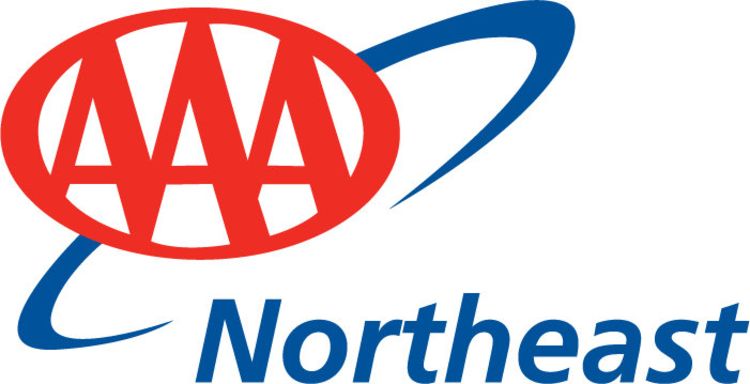

Why You Should Consider Financing Outside of the Dealership
No one wants to drive away from the car dealership with a sense that they are overpaying. Fortunately, that sinking feeling can be avoided by shopping for financing ahead of time.
“In my mind, there are two completely separate transactions that take place when you buy a car,” said Ted Lyons, vice president of Financial Services for AAA Northeast. “One is negotiating the price of the car, and the second is negotiating the financing of that purchase.”
While many buyers spend hours researching makes, features and even colors they want in a car, they rarely shop for new car financing, despite how important it is. When it comes to new car financing, you have two options.
Direct Lending
This is when you borrow money directly from a bank, credit union or finance company and use that loan to pay for the car. This allows you to comparison shop to find the best deals and to know the credit terms – like annual percentage rate, length of term and maximum amount – before you get to the dealership.
Some financial institutions, like AAA, can offer you both an auto loan and all the ancillary products, such as an extended warranty, debt protection and other coverages, at a significantly lower price than a dealership, which typically makes its money on the sale of these products.
And applying for an auto loan is a fast and easy process that takes only a few minutes, Lyons added.
Dealership Financing
Another option is to apply for financing through the dealership. While it can be convenient to do the car buying and financing all in one shot, you may not be given any financing options, and you could get stuck paying a higher interest rate than if you shopped for financing on your own.
After You Sign
Even if you agreed to the terms, you are not out of options. New car buyers always have the option to refinance. There is no law that says you cannot refinance an auto loan within the first 90 days. Refinancing a car can help you secure a lower interest rate on your loan, reduce your monthly payments and more.
Financing Made Easy
Aside from choosing your next car, figuring out how to pay for it is the biggest decision in this process. And if you opt to finance through a dealer, you could be spending hours in the office coming to an agreement, all for a loan that may not be the best you can secure.
Learn about financing your car through AAA, and see how much you can save when purchasing a new or used car through the AAA Auto Buying Program.
How to Negotiate a New Car Price
or Lease

Whether you’ve negotiated successfully in the past or never mastered the process, these tips can help you to avoid the sinking feeling that you overpaid.
Research New Car Prices to Determine a Fair Opening Bid
Most car shoppers dread haggling with a salesperson, but the negotiation process is less stressful when you begin on solid footing, which is an informed idea of what you can expect to pay. Research prices before you speak with a dealer so that you can arrive at a fair value for your preferred vehicle. Brand websites allow you to build the exact model you want and see the manufacturer’s suggested retail price.
Also known as the sticker price, the MSRP will be displayed on the dealer lot or advertised. The dealer will try to stay close to this price. Watch out for additional dealer markups. Due to the demand of popular vehicles, some dealers tack on thousands of extra dollars.
Car buyers should have a lower opening bid informed by online tools – like the AAA Auto Buying Program website – that show the average range of what other buyers have paid for a specific model. The ideal opening bid is on the low end of that spectrum. Due to the way manufacturers structure dealer discounts and incentives, it’s difficult to determine the exact invoice price, but the rough figure helps you to understand how much a dealer will profit from your purchase. Let the salesperson know that you have arrived at a fair price after thorough research, and always steer the conversation away from the MSRP.
Even if you plan to lease a new car, begin with this step. The full price of a leased car is known as cap cost, short for capitalized cost, and it will appear on your contract. Dealers often try to steer discussions toward monthly lease payments, often lowering them by extending the length of the lease, but a low cap cost is a better way to lower your monthly payment.
Request Multiple Quotes
Gathering competitive bids also gives you some leverage. For those who are particularly stressed about how to negotiate a new car price, a car buying service will do the legwork in exchange for a flat fee or percentage of your purchase or lease. Otherwise, contact multiple dealers so that you can compare quotes and use these to possibly secure an even lower price.
Most manufacturer websites incorporate tools that allow you to compare prices within a certain geographic radius. Depending on how far you are willing to travel, or how much delivery will cost, extend your search beyond the local area. Take your lowest quote to other dealers and see if they will beat it, shopping around until you feel comfortable with the deal.
Take Advantage of Manufacturer Incentives
While you want to avoid paying the retail price listed on manufacturer websites, look there for any incentives that can be applied to your new car deal. Since special offers are determined by location, you will need to provide your ZIP code to see a list of incentives that apply to purchases and leases. The most common incentives are rebates, finance offers and special programs that often are available for recent graduates and veterans.
Discuss Trade-In Value and Monthly Payments Later in the Process
Have you ever tried to negotiate a new car price only to be asked what your ideal monthly payment would be? Perhaps the most challenging part of negotiations is keeping the conversation on track. Dealers want to stay as close to the MSRP as possible, so salespeople will often steer the discussion away from price toward monthly payments and trade-in values. They can meet your ideal payment in several ways that won’t benefit you including extending the length of a loan or lease. Since cars depreciate quickly and interest adds up, you’ll wind up owing quite a lot more than the car is worth.
The time to discuss trade-in value and monthly payments is after you’ve agreed to the price. As with the fair price you researched for your new car, come prepared with the value of your trade-in. Use a reputable online tool to determine the amount you can expect to receive based on the make, model, age and condition of your car.
Even after following these tips, it can be hard to know when to accept a deal. Certainly, if a dealer can’t come reasonably near your price, it’s time to move on. The same holds true for pressuring tactics. However, if you receive a good offer from a reputable dealer, have the confidence to stop negotiating and move on to the enjoyment of your new vehicle.
Prequalifying for an Auto Loan

What does it mean to prequalify for an auto loan?
The process of getting an auto loan starts by proving to a lender that you’re a good candidate. When you prequalify, the lender looks at basic information on your financial profile and uses that to determine whether to grant you a loan. It’s the first step in the process of securing a loan and driving away in a new car.
Why prequalify for an auto loan before you shop?
When you prequalify for an auto loan it gives you the assurance that you’ll be able to get the loan you need when you find the perfect car. This makes budgeting easier and avoids disappointment.
Prequalifying also lets the dealership know you’re serious about buying a car. They want to work with people who are planning on going home with a new car, not with people who can’t get a loan or who have no real intention of buying. Walking in prequalified gives you credibility with the dealership, so you can be assured of their attention.
Lastly, you’ll often get a better deal when you prequalify for an auto loan on your own rather than working through the dealership. Spending the time to research the terms at various lenders gives you the best chance for getting a lower interest rate, which will save you money over the life of the loan.
You can apply online, over the phone or in person at AAA. Learn about AAA auto loan services.
Check Your Credit Report
You should check your credit report annually, but this is especially important when it comes time to prequalify for an auto loan. Your credit report will show any loans you have, from a mortgage to a credit card, and includes information on current balances and your payment histories. It also shows loans you have paid in full. If anything is incorrect, you should get the information corrected before you attempt to prequalify. You don’t want incorrect negative information hurting your chances.
If someone is cosigning your auto loan, have them check their credit information as well. You both need accurate credit reports to ensure you get the best terms possible.
Prequalifying for an Auto Loan

Auto Loan Payment Calculator
Whether you are a first-time loan shopper or looking to refinance, use an auto loan payment calculator like this one to get an estimate of what your monthly loan payments will be. Simply plug in the amount of the loan you’re looking for, interest rate and term length.




